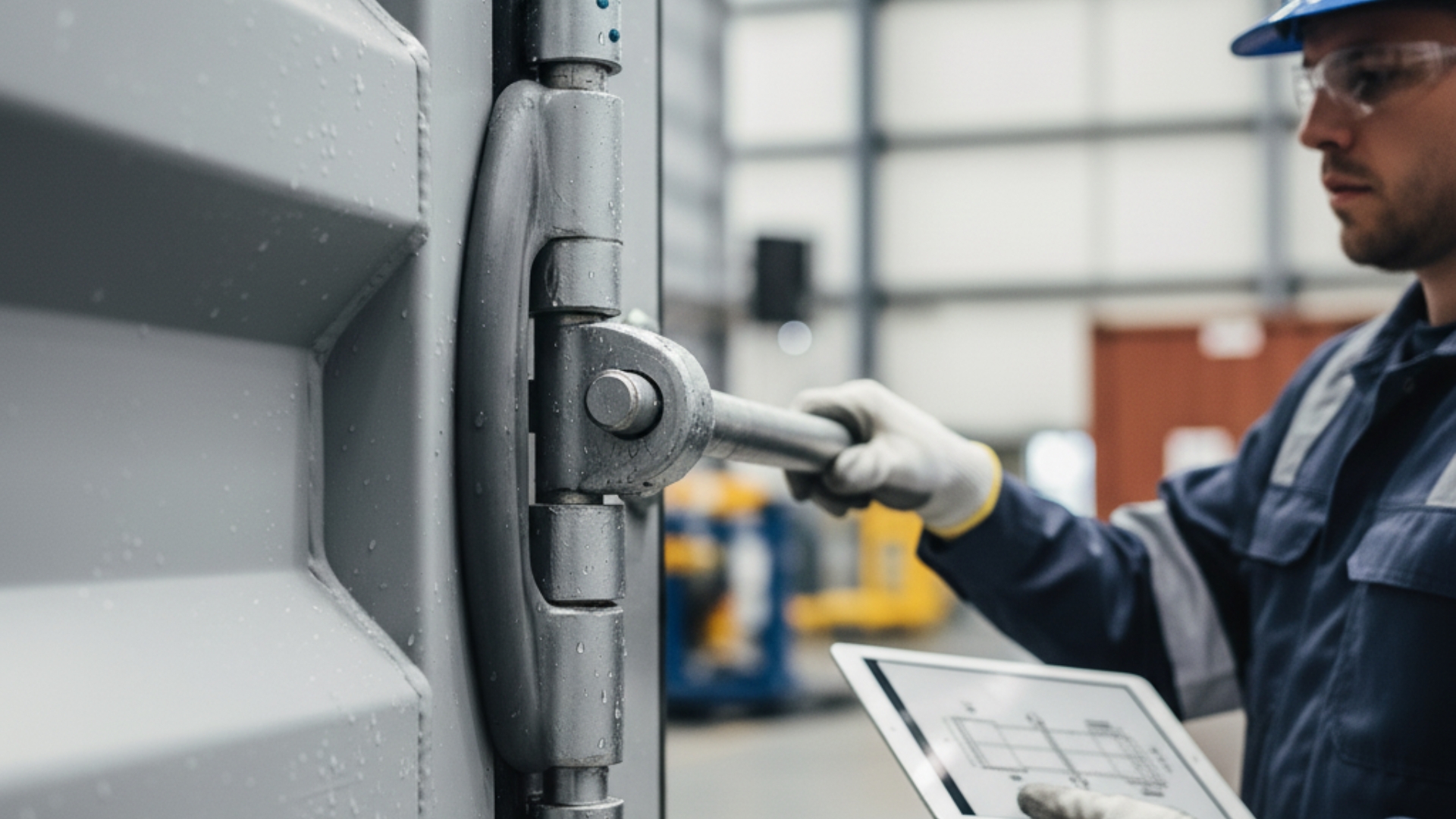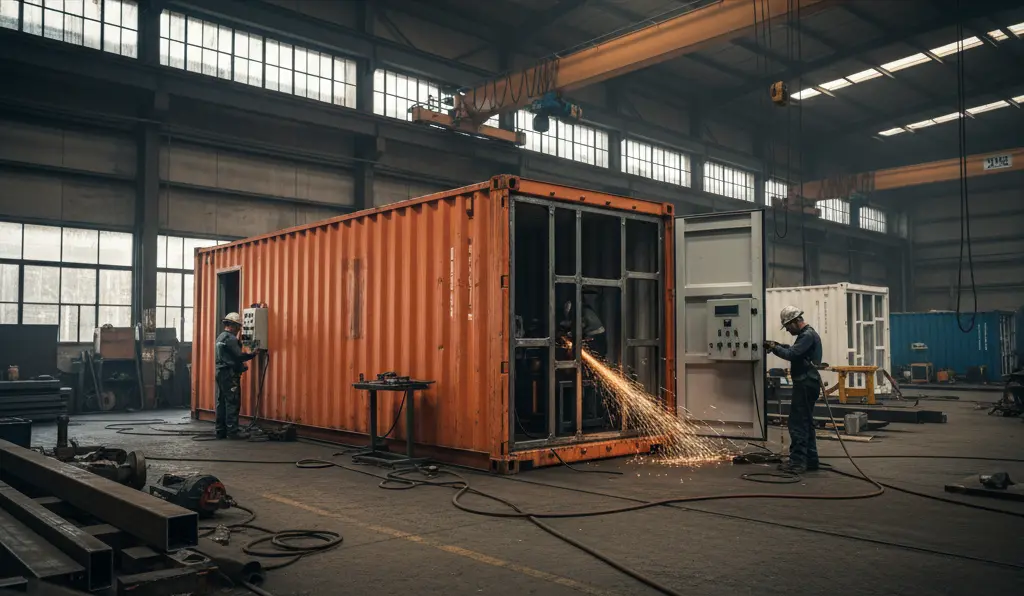In offshore and industrial operations, containers are more than just storage units. They serve as protective enclosures for sensitive cargo, high-value machinery, hazardous materials, or even temporary living and working spaces. Among the many components that make a DNV-certified container reliable, the door seals, gaskets, and hinges play a vital role in keeping the container watertight and structurally secure. A single compromised seal or worn hinge can allow water ingress, corrosion, or contamination, leading to costly damage and project delays.
Why Watertightness Matters in DNV Containers
Watertightness is a fundamental requirement for DNV containers, particularly because they are deployed in harsh environments such as oil rigs, offshore supply vessels, and marine transport. These containers are constantly exposed to saltwater spray, high humidity, tropical rainfall, and strong winds. If the doors are not properly sealed, the result can be water intrusion, damaged cargo, corrosion of the container interior, or even a failure to meet international certification standards. Effective door seals and hinges provide the first line of defense against these risks.
The Role of Door Seals and Gaskets
Door seals and gaskets are designed to create a flexible but airtight and watertight barrier around the container door edges. When the doors are closed, they compress tightly to prevent water, dust, and contaminants from entering. This not only keeps cargo safe but also prevents internal corrosion, supports temperature or pressure control in specialized containers, and ensures compliance with DNV 2.7-1 requirements.
Functions of Seals and Gaskets
- Prevent water ingress and protect cargo from rain, seawater spray, or submersion in extreme cases
- Block dust and contaminants to safeguard sensitive or sterile cargo
- Maintain pressure and climate control in refrigerated or pressurized containers
- Reduce corrosion by stopping moisture from entering joints and seams
Also Read : Customizing DNV Containers for Offshore Needs
Types of Seals Used in Offshore Environments
EPDM Rubber Seals: Resistant to UV, ozone, saltwater, and extreme temperatures. Industry standard for offshore containers.
Neoprene Seals: Excellent resistance to oil, fuels, and chemicals. Commonly used in chemical or fuel storage containers.
Silicone Seals: Highly resistant to extreme temperatures, both hot and cold. Used in specialized environments.
PVC or Thermoplastic Seals: Lightweight and cost-effective, though less durable than rubber-based seals. Rarely preferred for offshore use.
The Role of Hinges in Watertightness
While seals and gaskets form the barrier, hinges ensure that doors close with proper alignment and sufficient compression. Offshore container doors are heavy and must withstand frequent handling. High-quality hinges, often made from galvanized or stainless steel, maintain door alignment and prevent leaks by keeping the seals fully engaged. Without durable hinges, even the best seals cannot perform effectively.
Best Practices for Seal and Hinge Inspection
Seal Inspection Checklist
- Look for cracks, cuts, or flattening of rubber during visual checks
- Test elasticity to confirm flexibility and compression
- Close doors to confirm uniform seal contact along all edges
- Perform water spray tests to detect leaks at joints and seals
Hinge Inspection Checklist
- Check for corrosion, rust, or pitting on the hinge surface
- Ensure hinges move freely while holding the door securely
- Apply regular lubrication to reduce friction and wear
- Confirm that doors close evenly without gaps or misalignment
When to Replace Seals and Hinges
Seals generally last three to five years, though they may need replacement sooner if cracks or leaks develop. Hinges can last longer but should be replaced immediately if severe rust, cracks, or misalignment appear. Using certified replacement parts is critical, since uncertified spares may compromise watertightness and invalidate DNV certification.
Preventive Maintenance Tips
- Clean seals regularly to remove salt, dirt, and debris
- Apply silicone-based lubricants to seals to maintain flexibility
- Use marine-grade grease or coatings on hinges to prevent corrosion
- Include seal and hinge inspections in quarterly or annual maintenance schedules
Conclusion
The door seals, gaskets, and hinges of a DNV container may appear minor compared to the overall structure, but they are essential for ensuring watertightness and long-term reliability. Seals keep water, dust, and contaminants out, while hinges guarantee proper alignment and pressure to maintain that seal. By understanding the different types of seals, following inspection routines, and applying preventive maintenance, operators can extend the service life of containers, protect valuable cargo, and remain compliant with DNV 2.7-1 certification. In offshore and industrial environments where conditions are extreme, these simple components make the difference between reliable performance and costly failure.




